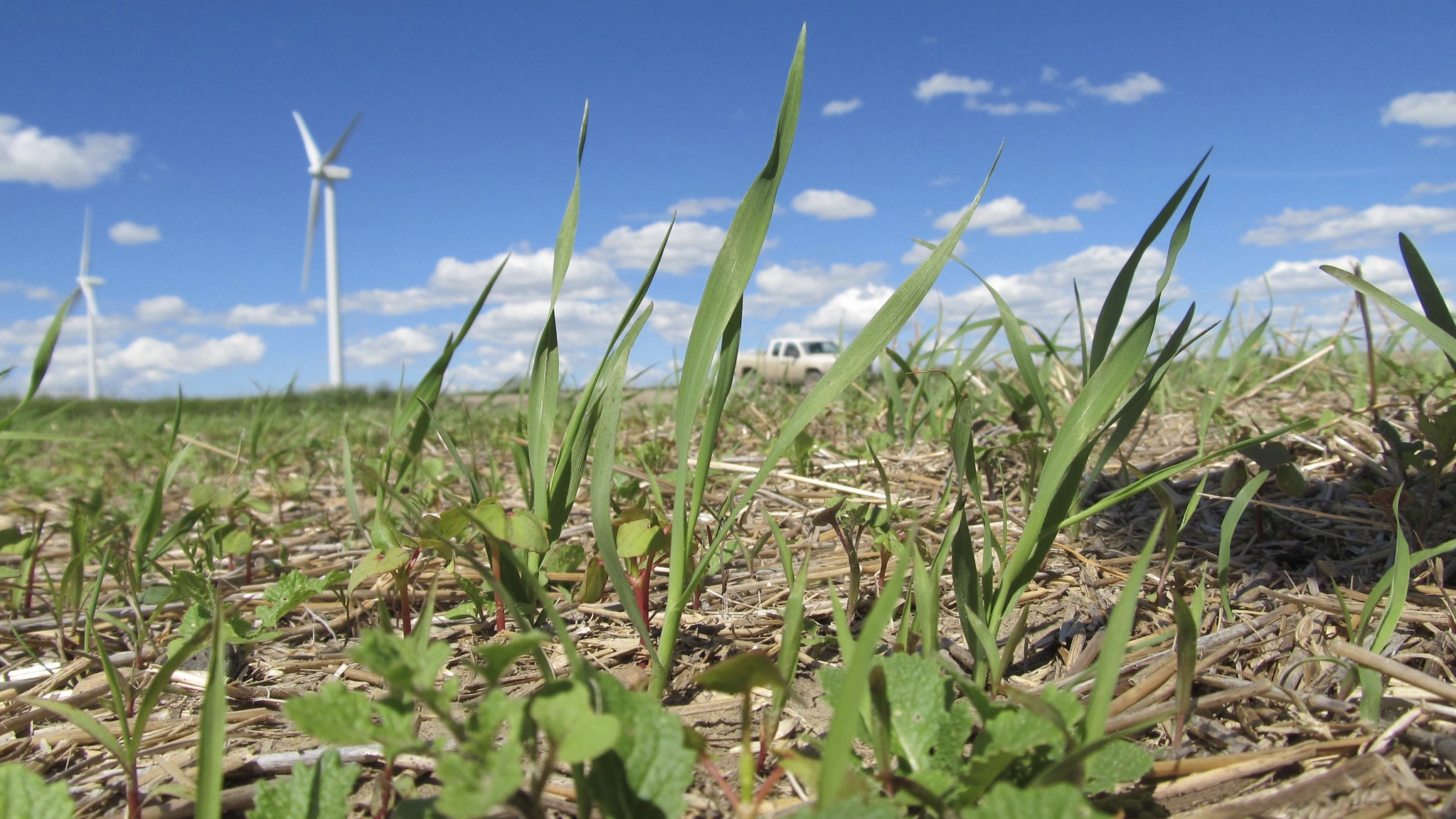On Sunny Day Farms near Palmer, Kansas, Lucinda Stuenkel raises cattle and grows wheat, soybeans, and other commodity crops.
But during times when no cash crop is growing, her fields do not lie fallow.
Stuenkel: “We try to have something green and growing in there all year round.”
For example, after harvesting winter wheat, Stuenkel seeds spring oats and peas, which grow as a cover crop. She lets her cows graze on that nutritious forage.
So she says cover crops benefit her cows, and they’re good for her soil because their roots help build up organic material, which allows the soil to absorb and retain more moisture.
Stuenkel: “My soil now can hold four more inches of rain than it did 20 years ago … and so I can have healthier plants that grow a couple weeks longer than everybody else’s around us because they still are able to retain that moisture in the soil … and they don’t dry out as fast in the hot Kansas sun.”
Hot, dry conditions are growing more common as the climate warms. So she says keeping plants in the ground year-round will help her farm adapt to a warming world.
Reporting credit: Sarah Kennedy / ChavoBart Digital Media
We help millions of people understand climate change and what to do about it. Help us reach even more people like you.
Source link


